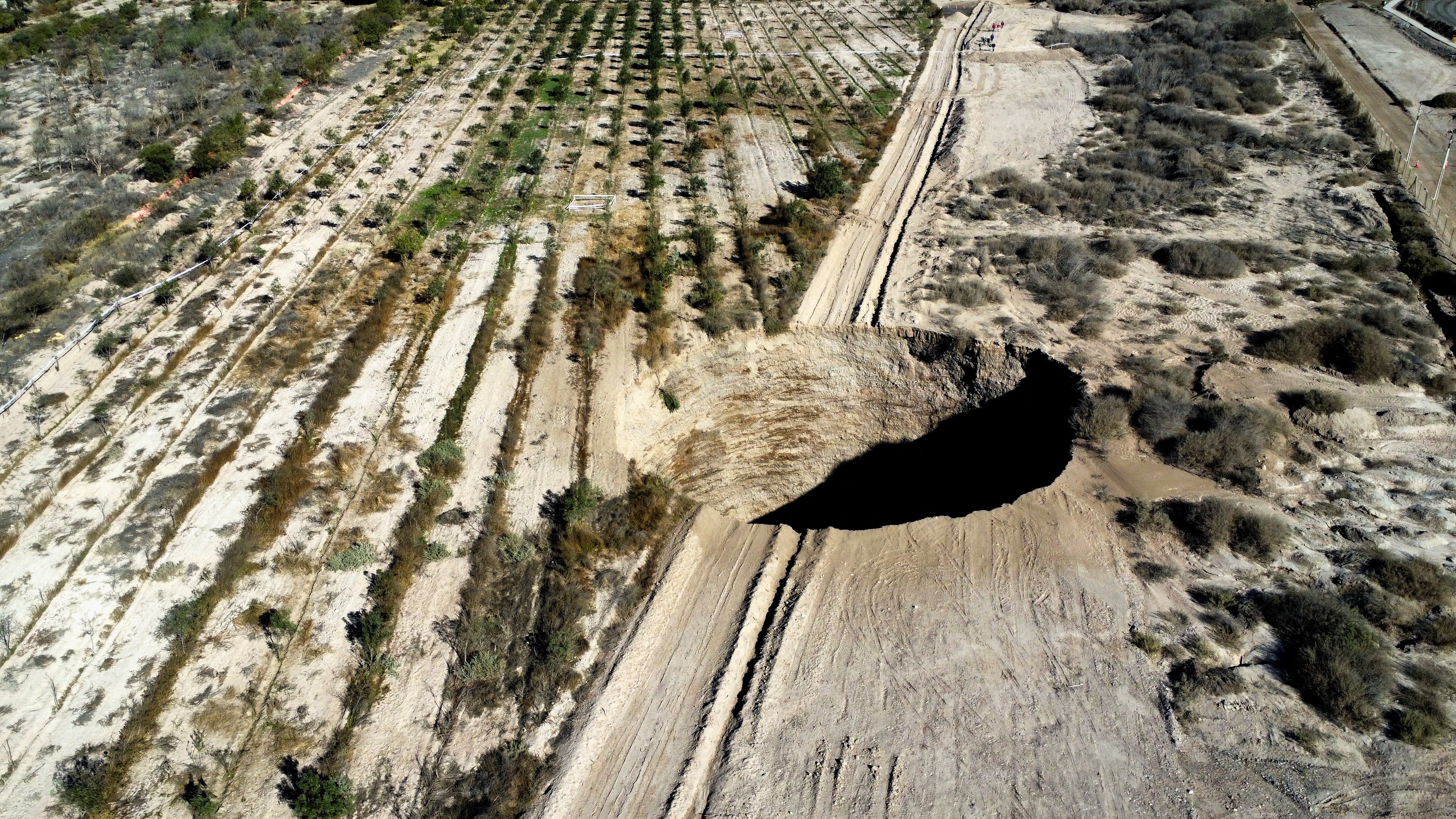Chile to ‘punish’ those responsible for massive sinkhole near copper mine
Chilean authorities have not provided details of the investigation into causes of the sinkhole
Your support helps us to tell the story
From reproductive rights to climate change to Big Tech, The Independent is on the ground when the story is developing. Whether it's investigating the financials of Elon Musk's pro-Trump PAC or producing our latest documentary, 'The A Word', which shines a light on the American women fighting for reproductive rights, we know how important it is to parse out the facts from the messaging.
At such a critical moment in US history, we need reporters on the ground. Your donation allows us to keep sending journalists to speak to both sides of the story.
The Independent is trusted by Americans across the entire political spectrum. And unlike many other quality news outlets, we choose not to lock Americans out of our reporting and analysis with paywalls. We believe quality journalism should be available to everyone, paid for by those who can afford it.
Your support makes all the difference.Chile will bring harsh sanctions on those responsible for a huge sinkhole near a copper mine in the country’s north, the mining minister said on Monday.
The mysterious 36.5-metre hole emerged in late July and led the mining regulator Sernageomin to suspend operations of a nearby mine owned by Canada’s Lundin, in the northern district of Candelaria.
"We are going to go all the way with consequences, to sanction, not just fine," Mining Minister Marcela Hernando said in a press release, adding that fines tend to be insignificant and the ruling must be "exemplary" to mining companies.
Chilean authorities have not provided details of the investigation into the cause of the sinkhole.
The huge hole opened up in a field near the Lundin Mining operation, about 665 kilometres north of the Chilean capital. Initially, the hole, near the town of Tierra Amarilla, measured about 25 metres across, with water visible at the bottom.
The Canadian firm owns 80 per cent of the property, while the remaining 20 per cent is in the hands of Japan’s Sumitomo Metal Mining Co Ltd and Sumitomo Corp.

The minister added that although the country’s mining regulator had carried out an inspection in the area in July, it was not able to detect the "over-exploitation" - exacavating the mine too heavily.
"That also makes us think that we have to reformulate what our inspection processes are," she said.
In a statement, Lundin said the over-exploitation referred to by the minister had been duly reported.
"We want to be emphatic that, to date, this hypothesis as reported by Sernageomin, has not been determined as the direct cause of the sinkhole. The hydrogeological and mining studies will provide the answers we are looking for today," a spokesperson said.
"Different events that could have caused the sinkhole are being investigated, including the abnormal rainfall recorded during the month of July, which is relevant," they added.





Join our commenting forum
Join thought-provoking conversations, follow other Independent readers and see their replies
Comments